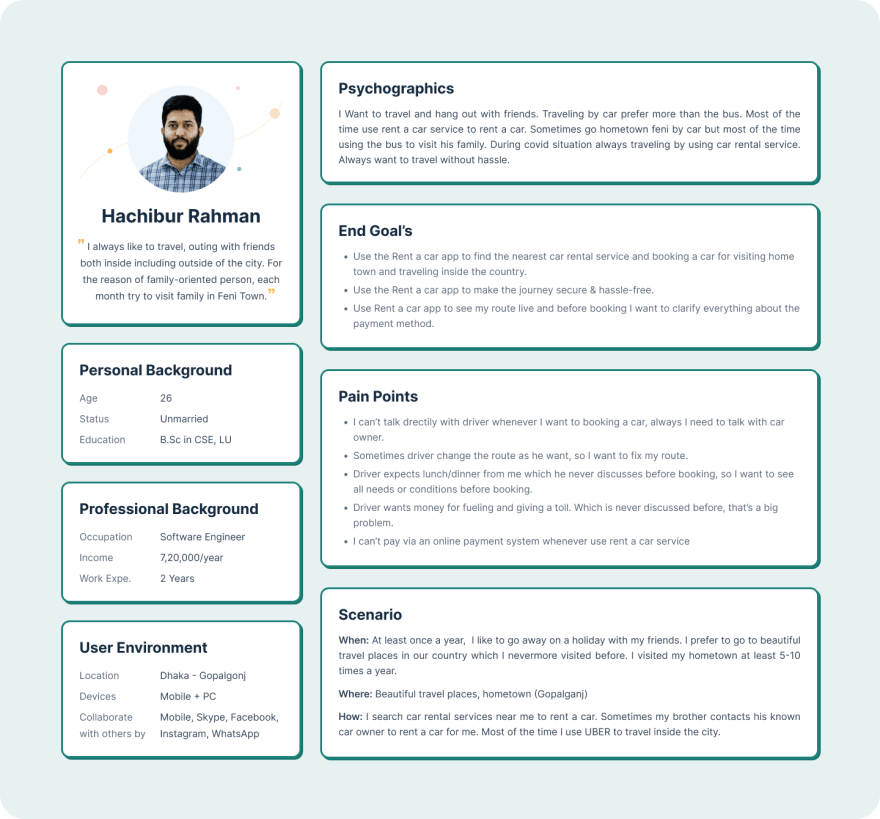What exactly is a user persona?
User Persona is a hypothetical archetype of an actual user profile according to their expectations, needs, goals, and observed behavioral patterns.
Each persona represents an entire audience of users. As a UX designer, I start the design process by conducting user research, building empathy with my target users, and identifying exactly what they need from the product I’m designing. A user persona embodies everything I learn from the user research phase user needs and goals, behavior, patterns, pain points, etc.
Why need a user persona?
To represent a group of users with similar goals and characteristics so that we can understand a large number of the user by using fewer data.
To understand the different needs and expectations of users.
Understanding user behavior and needs make it possible to define what is necessary or unnecessary for users from a user-centered point of view.
Helps to know whom you are designing for?
Helps to get to know users more closely to create a better experience.
Helps to know the user's pain points that helps to resolve the problem in the future.
Most designers work in multidisciplinary teams that have team members with varying expertise, experience, and points of view. Personas encapsulate the most critical information about users in a way that all team members and stakeholders can understand and relate to.
Persona defining process?
Before creating the persona, I conducted user research. First, I split my ideal users into several groups and pick a person from each group as a representative of each group. And gathered sufficient quantitative and qualitative data. Then organized all of this information into a persona group that represents my ideal customers.
I have broken down the process into four simple steps, now I’m going to explain each one.
Add a header: This includes a name, image, and a quote(that summarizes what matters most to my persona regarding my product).
Add some factual details: In this step, I added a demographic profile. Demographic details are based on research and it's can be divided into four main sections (Personal background, Professional background, User environment, and Psychographics).
The personal background section includes details such as age, gender, education, Persona group, and family status.
Professional background includes details such as professional occupation, income level, and work experience.
The user environment represents the physical, social, and technological context of the user. The purpose of the section is to answer questions such as what technological devices do use, and how often they collaborate with others.
The Psychographic section is where I linked with details such as the user's attitudes, interests, motivations, and pain points. By creating a Psychographic profile I can better understand why user behaves in a certain way including why they use any product.
Add user’s end goals: The end goal is the motivating factor that inspires action and focuses on what the users want or need to accomplish when using a product.
Add scenario: The scenario is the day in the life narrative that describes how a persona would interact with a product in a particular context to achieve their end goal.
Thanks you.
See my portfolios on Behance | Dribbble
Follow me on LinkedIn




Top comments (0)